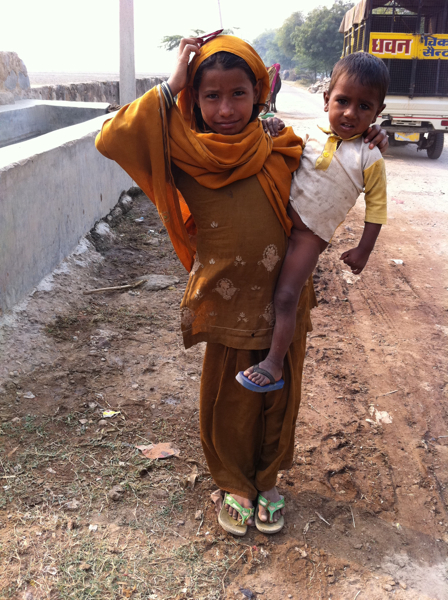While staying at the Hill Fort Kesroli, one morning (which happened to be Diwali, the biggest festival in the Hindu calendar) we walked the two kilometers of country road down to State Highway 14. Along the way we attracted curious stares from the local villagers, many of whom were going off to jobs elsewhere on their own motorbikes. We saw no one else walking, except children, who wanted their pictures taken (above), and only one couple on a bicycle.
I was pleasantly surprised by the prevalence of motor transport and amount of commuting from what probably used to be an isolated rural community, 12 km from the nearest town. Although 50-60% of India’s population still lives in villages, clearly many of them no longer depend on the land for their sole subsistence.
At the junction we caught a scooter taxi, a three-wheeled mode of public transport. In the cities, these are designed to carry three people. Out in the country, they’re a bit more robust.
The hotel manager had told us that the 10-km trip into Alwar should cost 10 to 20 rupees. We had the driver wait for us about two hours while we ambled around the market – this seemed easier than trying to explain to another driver later on where we were trying to get back to. When we arrived back at the Fort, neither of he nor I knew what I should pay him. He was embarrassed to ask too much: “This is my village.” I gave him Rs. 270 ($5), which I hope was several times the going rate. India’s economy works on so many different scales that it can be hard for a non-local to do the right thing.
Here’s some footage of the ride over to Alwar:





